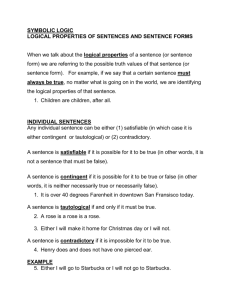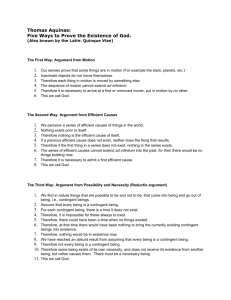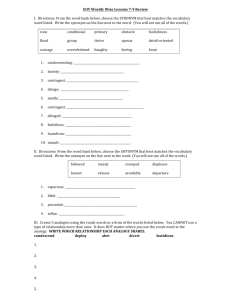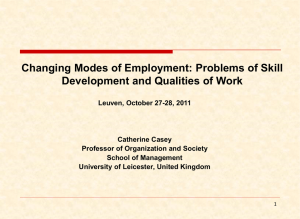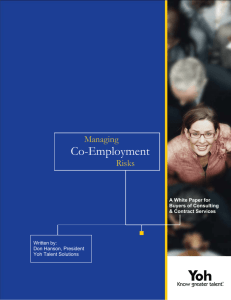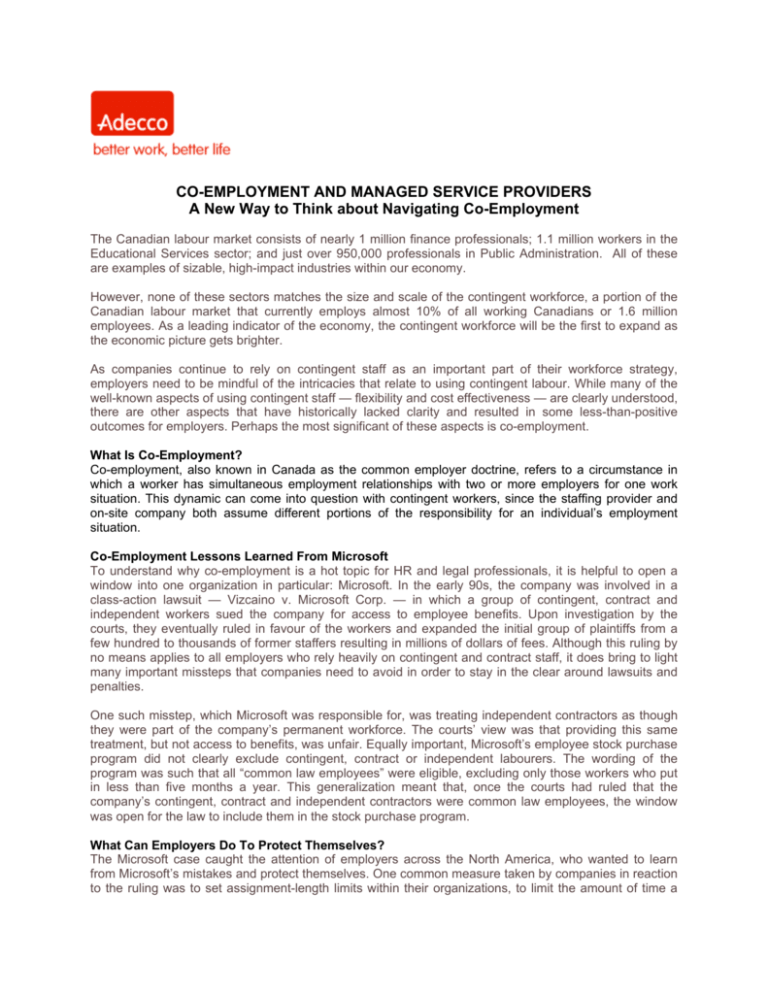
CO-EMPLOYMENT AND MANAGED SERVICE PROVIDERS
A New Way to Think about Navigating Co-Employment
The Canadian labour market consists of nearly 1 million finance professionals; 1.1 million workers in the
Educational Services sector; and just over 950,000 professionals in Public Administration. All of these
are examples of sizable, high-impact industries within our economy.
However, none of these sectors matches the size and scale of the contingent workforce, a portion of the
Canadian labour market that currently employs almost 10% of all working Canadians or 1.6 million
employees. As a leading indicator of the economy, the contingent workforce will be the first to expand as
the economic picture gets brighter.
As companies continue to rely on contingent staff as an important part of their workforce strategy,
employers need to be mindful of the intricacies that relate to using contingent labour. While many of the
well-known aspects of using contingent staff — flexibility and cost effectiveness — are clearly understood,
there are other aspects that have historically lacked clarity and resulted in some less-than-positive
outcomes for employers. Perhaps the most significant of these aspects is co-employment.
What Is Co-Employment?
Co-employment, also known in Canada as the common employer doctrine, refers to a circumstance in
which a worker has simultaneous employment relationships with two or more employers for one work
situation. This dynamic can come into question with contingent workers, since the staffing provider and
on-site company both assume different portions of the responsibility for an individual’s employment
situation.
Co-Employment Lessons Learned From Microsoft
To understand why co-employment is a hot topic for HR and legal professionals, it is helpful to open a
window into one organization in particular: Microsoft. In the early 90s, the company was involved in a
class-action lawsuit — Vizcaino v. Microsoft Corp. — in which a group of contingent, contract and
independent workers sued the company for access to employee benefits. Upon investigation by the
courts, they eventually ruled in favour of the workers and expanded the initial group of plaintiffs from a
few hundred to thousands of former staffers resulting in millions of dollars of fees. Although this ruling by
no means applies to all employers who rely heavily on contingent and contract staff, it does bring to light
many important missteps that companies need to avoid in order to stay in the clear around lawsuits and
penalties.
One such misstep, which Microsoft was responsible for, was treating independent contractors as though
they were part of the company’s permanent workforce. The courts’ view was that providing this same
treatment, but not access to benefits, was unfair. Equally important, Microsoft’s employee stock purchase
program did not clearly exclude contingent, contract or independent labourers. The wording of the
program was such that all “common law employees” were eligible, excluding only those workers who put
in less than five months a year. This generalization meant that, once the courts had ruled that the
company’s contingent, contract and independent contractors were common law employees, the window
was open for the law to include them in the stock purchase program.
What Can Employers Do To Protect Themselves?
The Microsoft case caught the attention of employers across the North America, who wanted to learn
from Microsoft’s mistakes and protect themselves. One common measure taken by companies in reaction
to the ruling was to set assignment-length limits within their organizations, to limit the amount of time a
contingent worker could be with the company. This approach limits a contingent employee’s ability to
make any claims for benefits by pre-empting any long-term employment relationship with the company.
But is this the right strategic response or just a knee-jerk reaction?
The reality is that mandating assignment-length limits is not the most effective way to avoid coemployment. The terms of the relationship between the organization and the contingent worker is the
more important indicator of employment-status — not the amount of time the two parties have been
working together. Since the Microsoft ruling, much has been learned about how to prevent penalties from
co-employment.
The Evolving Role Of MSPs In Navigating Co-Employment Issues
Co-employment is clearly not something employers can afford to get wrong. While most
staffing providers are experts on the co-employment subject, finding the right business partner to align
with your contingent, contract and independent labour workers can be a bigger task than just calling a
local staffing office.
Over the past seven years, there has been an increase in mid/large-sized organizations looking to
Managed Services Providers (MSPs) that offer customized and comprehensive programs. These
programs are a blend of contingent labour supply chain management and technology, coordinated by a
sophisticated Program Management Office (PMO) and governance model. What makes an MSP solution
unique is that it provides the expertise and guidance that enable organizations to avoid
co-employment pitfalls, through the following ways:
Leveraging Technology
Utilizing technology to manage workers’ assignments and hours worked is a key to keeping up-to-date
with your contingent, contract and independent labour workers’ status.
Handling The “HR Component”
i.e., pay negotiations, insurance coverage,
HR issues, on-boarding and off-boarding.
Allowing the MSP provider to manage all aspects of your contingent, contract and independent labour
workers takes the guess work out of co-employment and keeps defined boundaries between you and the
workers.
Establishing Clear Boundaries
In a co-employment situation, in order for the staffing provider to be positioned as the primary employer
responsible for the worker, there must be clearly outlined roles for each party. All employer
responsibilities – such as recruiting, pay negotiation, insurance coverage, HR issues, on-boarding and
termination – must be handled solely by the staffing provider, with the on-site company taking
responsibility for only direction and supervision of day-to-day responsibilities. When either party goes
beyond their role, it
becomes unclear which party is the primary employer and will make determining employment more
challenging. Employers must also be sure that contingent workers are identified differently in their
organizations, to further differentiate them from permanent staff — for example, issuing separate ID
badges and making their e-mail addresses look different.
Co-employment can be managed [by outsourcing] services provided by a managed service provider
(MSP) that manages and controls its own employees directly. Insulation from the enterprise is provided by
the outsourcer’s on-site supervisor.
HRO TODAY MAGAZINE
Helping You Create A Clear And Differentiated Benefits Plan
A major issue in Microsoft’s case was their usage of the phrase “common law employees” in their
employee stock purchase program, which had the effect of excluding employees only on the basis of their
length of service. This lack of clarity is what really opened the organization up for scrutiny and penalty. As
organizations put together policies around their benefit offerings, it is important to be as detailed as
possible in outlining exactly which type of employees are eligible for benefits. Clearly detail whether or not
contingent, contract and independent workers fall within the plan’s scope. This sort of clarity can help you
avoid questions and litigation in the future. In addition, another effective strategy is having contingent
workers sign a waiver that they will not claim access to benefits from their assignment company at any
point. Managed service providers will often administer this as part of the on-boarding process.
Helping You Stay Current
Keeping abreast of the latest in labour laws and government regulations can be a difficult task. The MSP
provides up-to-the-minute expertise and guidance around co-employment and other labour laws that can
affect your business positively and negatively. Your MSP provider should always be updating you on
current trends, laws and regulations and works in a consultative manner, to help mitigate risks.
The MSP Result: Less Co-Employment Risk, Greater Workforce Efficiency.
In the current recession, employees who have survived recent rounds of mass layoffs have an increased
workload — the demand to do “more with less” is more prevalent than ever. It is not uncommon for
organizations that have a growing workload with a shrinking number of people to “slip” and end up
making a contractor feel like an employee. The delineation becomes blurry when contractors begin to
take on critical roles inside an organization. Has your organization crossed that line? How can you be
sure?
As you engage with contingent, contract and independent workers, consider utilizing an MSP with a
customized and comprehensive offering that will handle the complete administration of your
organization’s contingent labour program. Managing the contingent workforce framework is what these
organizations do day-in and day-out, so they have a unique ability to provide the expertise, guidance and
execution that will enable your company to avoid any co-employment pitfalls.
Over the years since the Microsoft case, there has been much debate around the dynamics and
implications of co-employment, and organizations have learned how to successfully engage and define
their relationship with contingent, contract and independent labour workers. With the right guidance, coemployment issues can be avoided simply by applying the appropriate processes, policies and programs.
In the end, what is abundantly clear, especially in tough economic times, is that contingent, contract and
independent labour workers are an essential part of any strategic organization’s workforce strategy. The
key is to ensure you have the right strategy or program in place for managing these types of workers and
the result is effective and cost-efficient.
For more strategic advice on managing a more productive and cost-effective workforce, please e-mail us
at excellence@adecco.ca.
© 2009 Adecco. All Rights Reserved.
For inquiries on this whitepaper or on our HR solutions, please feel free to contact us:
1.866.646.3322* | excellence@adecco.ca | adecco.ca
*Calling within the 416 area code? Dial 416.646.3322
About Adecco
With over 50 years of experience and 7,000 offices worldwide (including 60 branches in Canada), Adecco is the world leader in
human resource solutions. Simply put, Adecco connects more people – with more permanent, temporary and contract employment
opportunities – at more organizations than any other company in Canada. For more information about our human resource,
recruitment or staffing solutions, please click here or e-mail us at excellence@adecco.ca.

